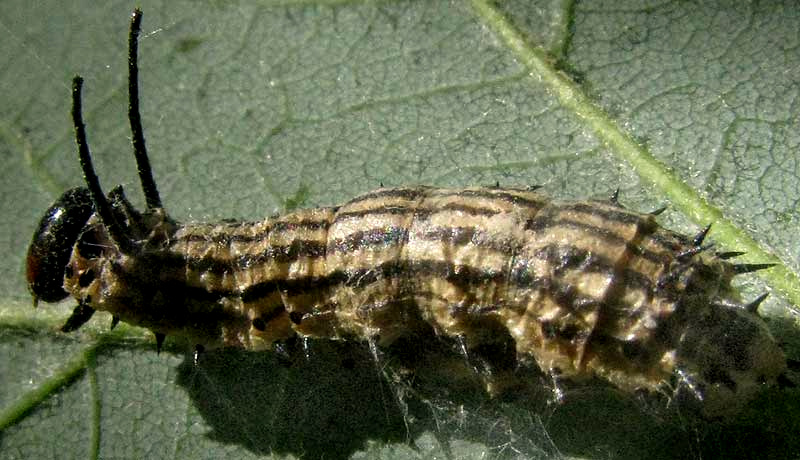Excerpts from Jim Conrad's
Naturalist Newsletter

from the June 10, 2012 Newsletter issued from the woods of the Loess Hill Region a few miles east of Natchez, Mississippi, USA
MAPLEWORM
Deep in a heavily shaded, frequently flooded bottomland forest in nearby Homochitto National Forest, on the underside of a Red Maple's leaf a caterpillar an inch long (2.5cm) worked along the leaf's midrib. When he realized he was being watched he raised the front part of his body, causing the two slender, black "horns" sprouting from his shoulder area to look a bit threatening, and he froze, allowing the nice picture above.
Identifying such unusual caterpillars can be hard but volunteer identifier Bea in Ontario used a trick on this one. Instead of trying to figure it out on the basis of anatomy, she instead did an image search on the stab-in-the-dark word "mapleworm," and by golly she got some matching images.
One name for the caterpillar is the Greenstriped Mapleworm. It's DRYOCAMPA RUBICUNDA, and it'll metamorphose into a pretty, rosy-pink and creamy-yellow moth. As a member of the Saturniid Family, the Saturniidae, the moth this caterpillar will change into will possess only vestigial mouthparts and no digestive system. The moth's duty will be to have sex, the female to lay eggs, and then to die. The caterpillar's job is similarly simple: Just eat and survive.
Because of the caterpillar's small size I'd assumed that it was a young, early-instar one. However, I read that in this species larvae reach only about an inch long, like ours, so this must have been an adult. Fully-grown caterpillars pupate and overwinter in shallow underground chambers. Mostly they're found in eastern North America.